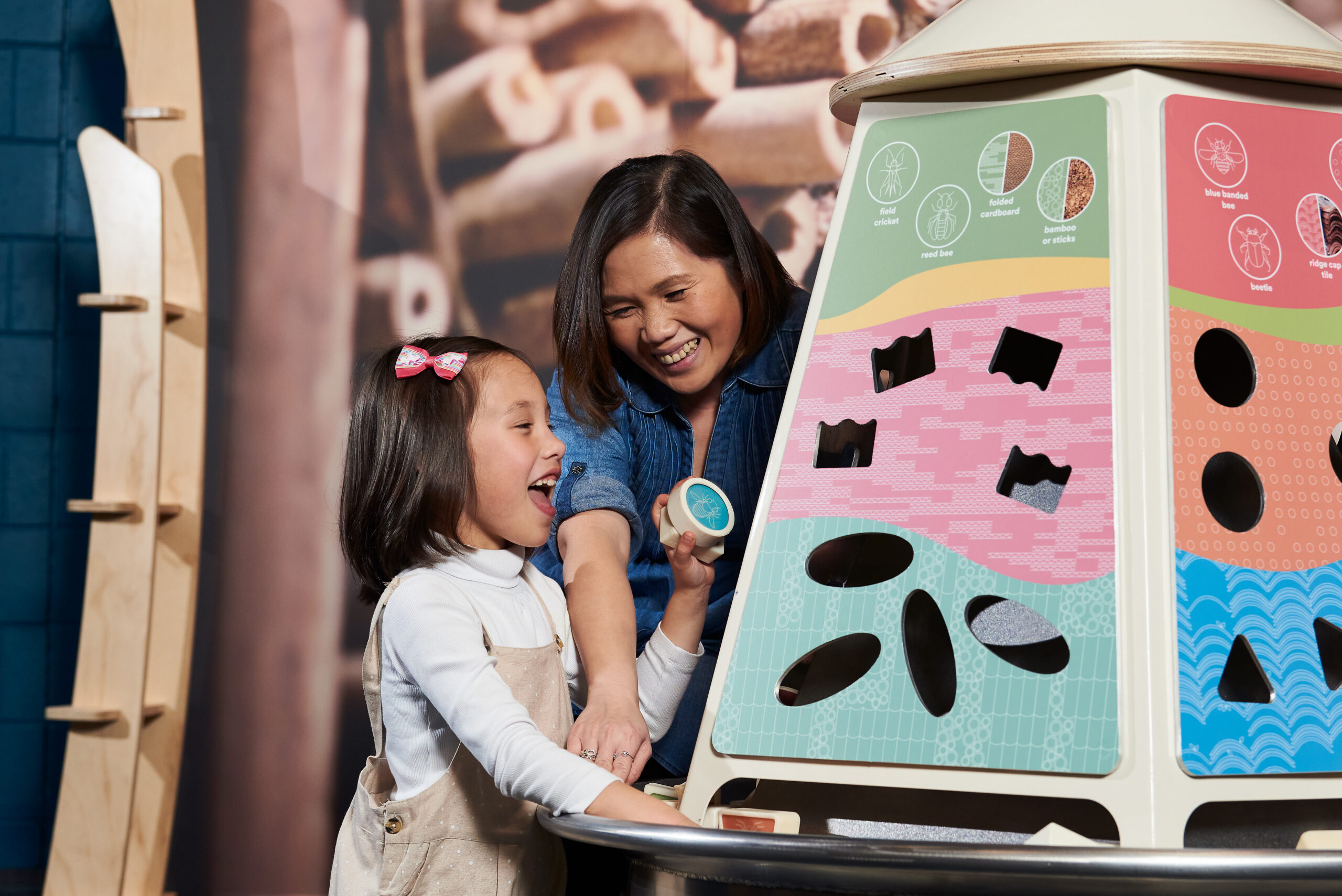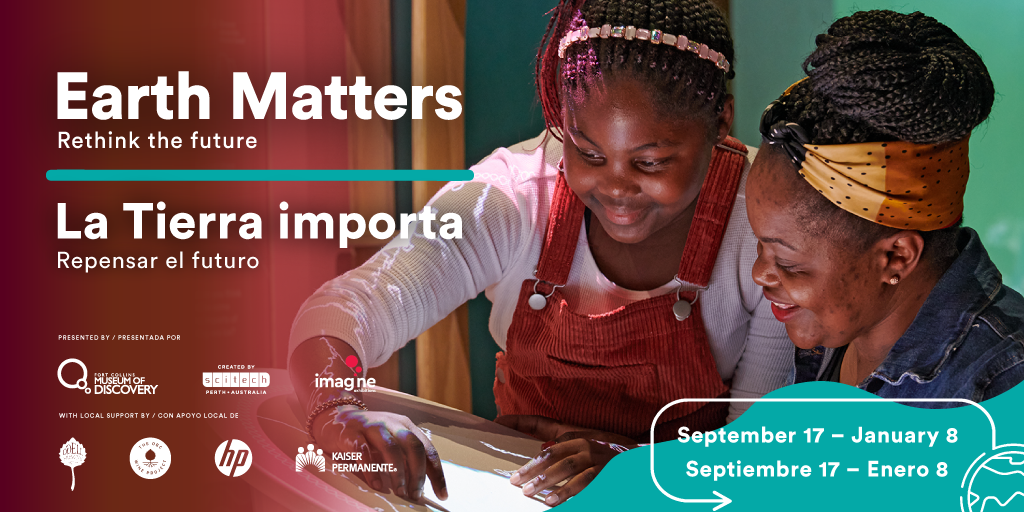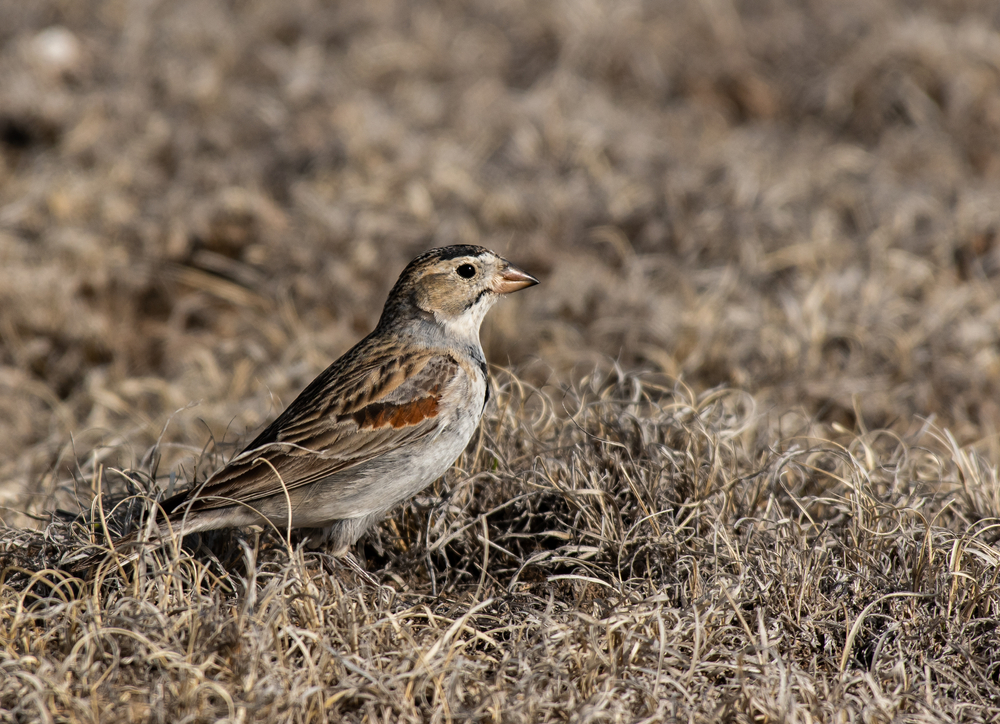Explore our changing planet and visit Earth Matters: Rethink the Future at Fort Collins Museum of Discovery from September 17 until January 8.
Explora un planeta que está en constante transformación; el nuestro, y visita la exhibición especial La Tierra importa: Repensar el futuro que llegará al Museo del Descubrimiento de Fort Collins a partir del 18 de septiembre hasta el 8 de enero.
Earth Matters: Rethink the Future features fully interactive exhibits that put viewers front and center – enabling them to think in terms of solutions across a world of topics. Visitors will engage in themes such as biodiversity, rising global temperatures, and carbon emissions while creating lasting perspectives about the bigger roles we play in our environments.
While thinking about sustainability, you’ll see the inner workings of a tree, learn about endangered species, experience life in a coral reef, and calculate your water consumption. Earth Matters: Rethink the Future gives us all the chance to reimagine a more sustainable future – starting in our own backyard.
We are excited to take part in such a topical conversation. The exhibit will be on display until January 8, 2023, featuring STEM crossover for school audiences, and lifelong learners as well.


La Tierra importa: Repensar el futuro es una exhibición ampliamente interactiva que coloca a los espectadores frente a cuestiones elementales que buscan encontrar soluciones diversas a problemas vigentes. Con temas como la biodiversidad, el aumento de las temperaturas globales, las emisiones de carbono, y mucho más, podrás crear diferentes perspectivas sobre el rol que tienes en cuanto a tu entorno.
Mientras piensas en la sostenibilidad, verás el funcionamiento interno de un árbol, aprenderás sobre especies en peligro de extinción, experimentarás la vida en un arrecife de coral, calcularás tu consumo de agua, entre muchas otras actividades increíbles y educativas, incluyendo experiencias STEM (ciencia, tecnología, ingeniería y matemáticas por sus siglas en inglés) para toda la familia.
La Tierra importa: Repensar el futuro nos da la oportunidad de volver a imaginar un futuro más sostenible, comenzando en nuestro propio hogar.
Esta exhibición especial estará presente hasta el 8 de enero de 2023.
¡Los esperamos!
Experience Earth Matters: Rethink The Future at Fort Collins Museum of Discovery
Visita La Tierra importa: Repensar el futuro en el Museo del Descubrimiento de Fort Collins
September 17, 2022 – January 8, 2023
17 de septiembre – 8 de enero, 2023
*El día 17 de septiembre es un preestreno exclusivo para miembros del museo.
This exhibit is made possible with generous support from:
Esta exhibición ha sido posible gracias al generoso apoyo de:








